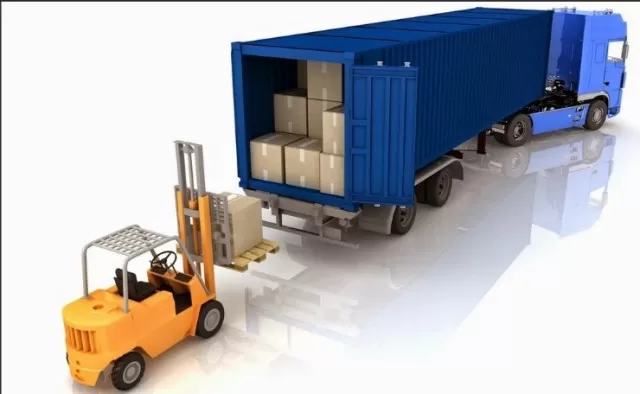Insights from Sanitation Workers You Should Know. In the shadows of the early morning, while most are still in slumber, sanitation workers embark on a challenging journey that often goes unnoticed.
Their dedication keeps our communities clean and functioning smoothly, yet their jobs are anything but easy. Let’s shed light on a few things that these unsung heroes wish you knew, which could make their vital roles safer and simpler. By understanding and respecting the challenges sanitation workers face, we can play an active role in making their daily tasks safer and more straightforward. Let’s extend our gratitude and support to these indispensable members of our communities, whose commitment ensures that our neighborhoods remain clean and harmonious.
Embrace Waste Awareness: Empowering Responsible Sanitation Practices

In today’s fast-paced world, curbside trash pickup has become a convenience many Americans take for granted.
However, this nonchalant attitude towards residential waste collection regulations can unknowingly lead to violations and harm sanitation workers and the environment. To ensure a cleaner and safer community, it is crucial to be well-informed about the rules and guidelines surrounding trash disposal.
Shifting our focus towards waste awareness, we can make a positive impact on our surroundings.
Understanding the hazards posed by certain items is vital—materials that could endanger sanitation workers or harm the environment should never be casually tossed in the trash. Instead, many localities provide specialized collections for hazardous waste, allowing for proper disposal and recycling.
Moreover, some cities offer bulk pickups for unwieldy items like mattresses and refrigerators, encouraging responsible waste handling.
Taking the initiative to educate ourselves about waste management programs is a simple but significant step towards responsible citizenship.
By reaching out to our local sanitation departments or exploring their websites, we can easily discover what our municipality requires in terms of waste disposal. This knowledge equips us to make informed decisions when it comes to discarding our trash and participating in special waste-handling initiatives.
Let’s rise to the challenge of waste awareness and become champions of responsible sanitation practices.
Together, we can build a cleaner, greener future for generations to come.
Opt for Sanctioned Receptacles: Avoid Unforeseen Trash Woes
Have you ever experienced the frustration of placing a Cardboard Box brimming with garbage next to your already overflowing trash can, only to find it untouched the next morning during the trash pickup? Chances are, your box was overlooked simply because it wasn’t considered an approved trash container.
The rules surrounding waste disposal vary significantly from one community to another, and in some areas, sanitation companies supply specially designated containers equipped with locking lids. Consequently, any garbage left in an unapproved receptacle risks being left behind.
To circumvent such unforeseen trash woes, it is crucial to adhere to the guidelines set forth by your local community.
Taking the time to use only approved containers for waste disposal ensures that your trash will be collected promptly and efficiently. Some regions provide specific bins or containers to residents, designed to meet the sanitation requirements and facilitate hassle-free pickups.
By abiding by the designated waste receptacles, you not only contribute to the smooth functioning of the waste management system but also play a role in maintaining the cleanliness and aesthetics of your neighborhood.
Additionally, using approved containers minimizes the risk of animals getting into the trash, preventing potential littering issues.
So, let’s be proactive in adopting the sanctioned waste disposal methods, for in doing so, we not only enhance the efficiency of trash collection but also demonstrate our commitment to being responsible and considerate members of our community.
Embrace \”Bag It\”: Simplify Sanitation, Keep it Clean

A small change in our trash disposal routine can make a significant difference in the efficiency of waste collection and the cleanliness of our curbside trash containers.
Rather than tossing trash directly into the container, let’s adopt the “Bag It” approach. By placing all trash in plastic garbage bags before depositing them in the curbside container, we can reap multiple benefits for both sanitation workers and our community.
Firstly, bagging our trash ensures that garbage remains contained and won’t spill out when the sanitation worker empties the container into the garbage truck.
This not only saves time and effort for the workers but also prevents unsightly littering incidents in our neighborhoods.
Secondly, using garbage bags helps keep the container cleaner, eliminating messy residues that attract flies and other pests.
By avoiding direct contact between trash and the container’s interior, we create a more hygienic environment for waste collection and reduce the chances of foul odors.
Moreover, the “Bag It” approach simplifies the cleaning process for both residents and sanitation workers.
When the container is lined with trash bags, emptying and maintaining it becomes a much more straightforward task, contributing to a smoother waste management operation.
Let’s recognize that a small act like bagging our trash can have a Big Impact on the overall sanitation process.
By adopting this simple yet effective practice, we demonstrate our consideration for the sanitation workers’ efforts and contribute to a cleaner, more orderly community. Together, we can make waste disposal more efficient and keep our surroundings pristine for everyone to enjoy.
Exercise Caution: Safeguard Sanitation Workers on the Roads
Navigating the streets requires constant vigilance, not only for our own safety but also for the well-being of others, including sanitation workers who perform their crucial tasks amidst traffic hazards.
These diligent individuals frequently traverse roads, retrieving trash containers from curbsides, making their job particularly perilous. To ensure the safety of these essential workers, more than 20 states have implemented “Slow Down to Get Around” laws, as reported by the National Waste & Recycling Association. Embracing this responsible driving practice can significantly reduce risks and protect the lives of those working to keep our communities clean.
When approaching a sanitation truck on the road, let’s be mindful of the potential dangers and take appropriate precautions.
Always reduce your speed to a safe level, allowing ample time to assess the situation. Look out for sanitation workers who might be crossing the street, carrying out their duties.
Remain attentive to traffic from the opposite direction, ensuring that it’s safe to pass the truck. Remember, a moment of distraction can have severe consequences for the safety of those around us.
Maintaining a watchful eye and being prepared to stop completely if a sanitation worker steps into the street is an essential part of responsible driving.
By adopting this cautious approach, we actively contribute to creating a safer environment for everyone, including the dedicated individuals working hard to keep our neighborhoods clean and hygienic.
Let’s embrace the spirit of “Slow Down When Driving Around a Sanitation Truck” and drive with a heightened sense of awareness and respect for those who labor tirelessly to maintain the cleanliness and orderliness of our streets.
Together, we can make a positive impact and ensure the well-being of our fellow citizens.
Ensure Proper Placement: Optimize Sanitation Container Pickup

When utilizing sanitation services that require the use of poly-carts or other designated containers, it’s essential to position them correctly to facilitate seamless waste collection.
These specialized containers are designed to be lifted by garbage trucks equipped with mechanical arms, streamlining the process for both residents and sanitation workers. To ensure efficient pickups and to prevent any potential obstacles, follow these guidelines:.
Orientation: Position the poly-cart or mandated container as instructed by your sanitation company, typically with the handle facing towards your house.
This positioning allows for easy access during pickup and ensures that the container is aligned optimally for the mechanical arms to grab and empty its contents.
Clear Space: Leave at least three feet of clearance around the container, keeping it away from curbside obstacles such as mailboxes, parked cars, or any other obstructions.
Ample space allows the automated arms of the garbage truck to maneuver smoothly and safely pick up the container without any hindrance.
Accessibility: Even if the sanitation workers are manually handling the container, it’s still a considerate practice to provide them with sufficient room to maneuver.
Placing the container in an easily accessible spot along the curb eases the collection process for the workers and reduces the risk of potential accidents.
Watch for Overhead Hazards: Avoid positioning the cart under low-hanging branches, basketball hoops, or any other structures that could obstruct the automatic arms from safely lifting the container.
Ensuring a clear path above the container prevents any damage to the equipment and minimizes delays in waste collection.
By adhering to these guidelines, we contribute to the smooth functioning of waste management services and demonstrate our appreciation for the Hard Work of sanitation workers.
Let’s make their job easier by correctly placing our containers, ensuring a cleaner and safer environment for everyone.
*The information is for reference only.